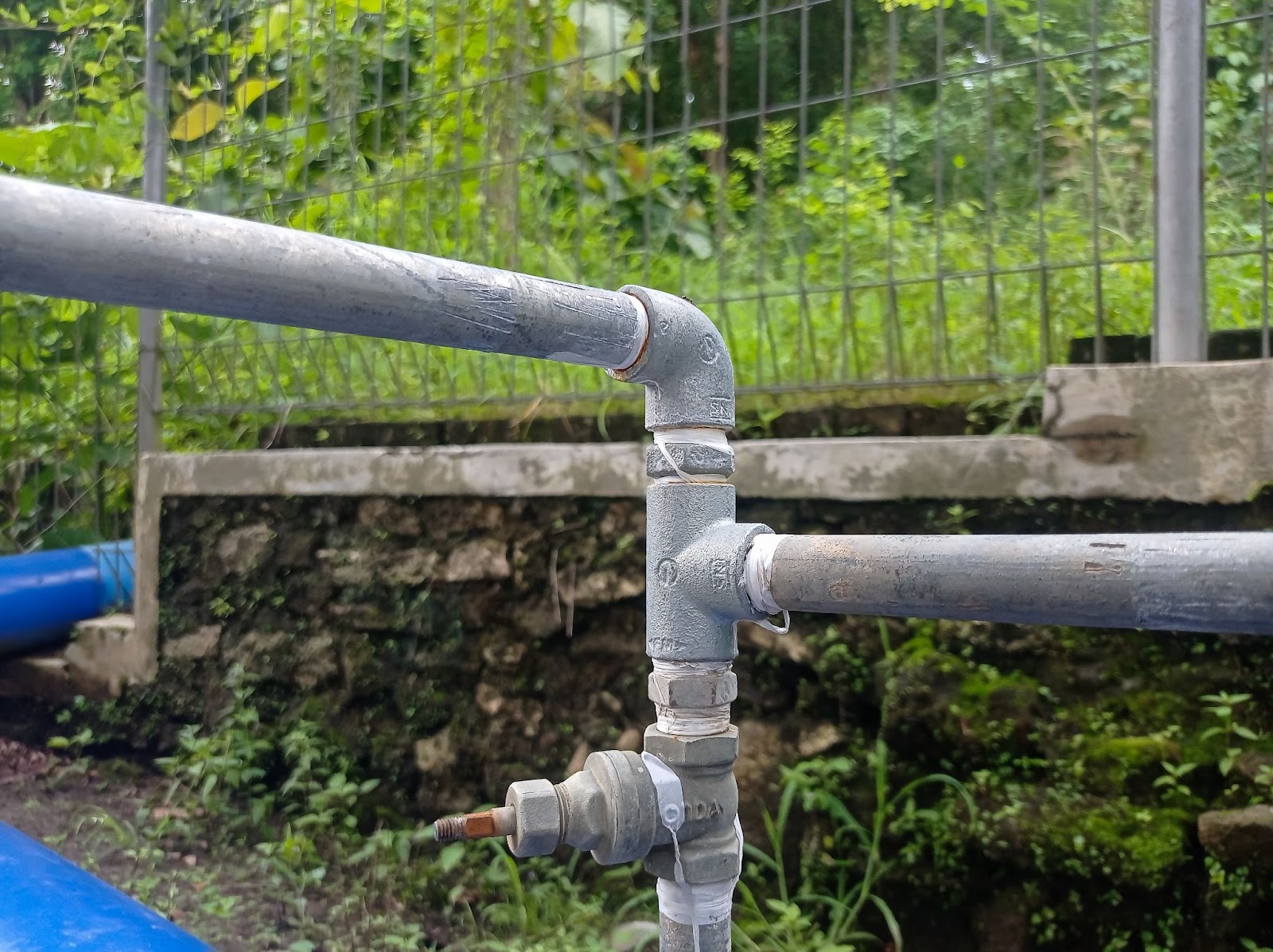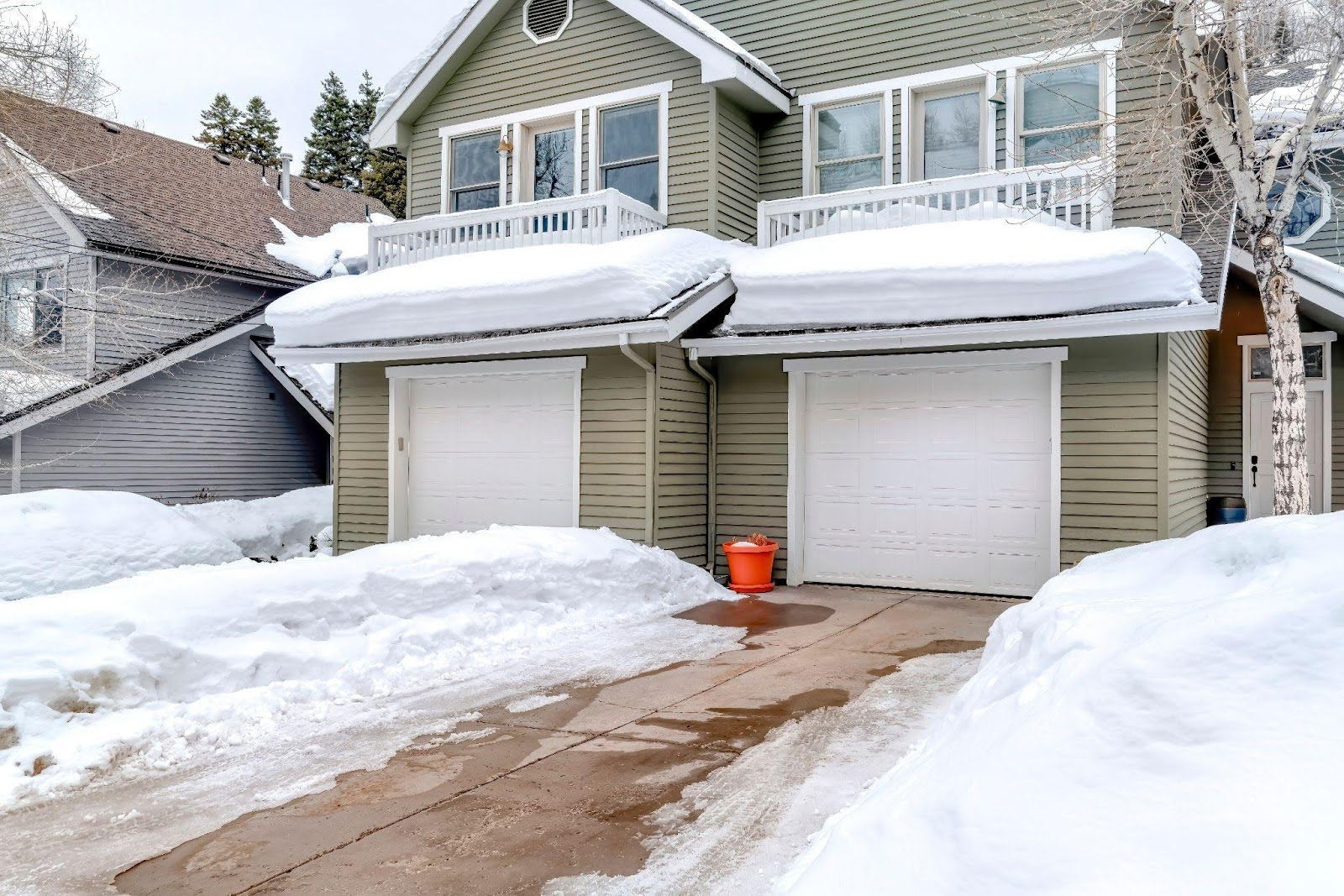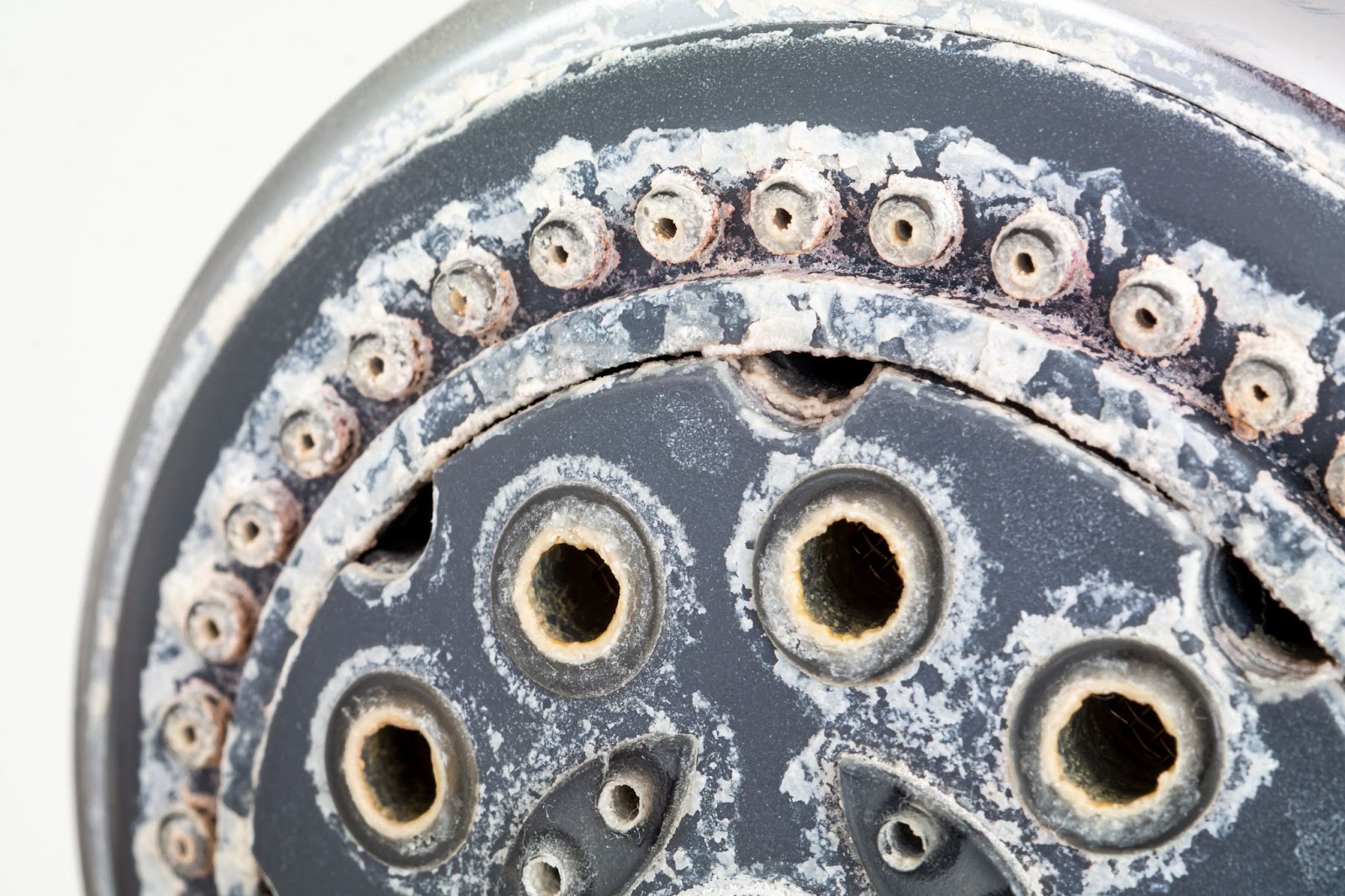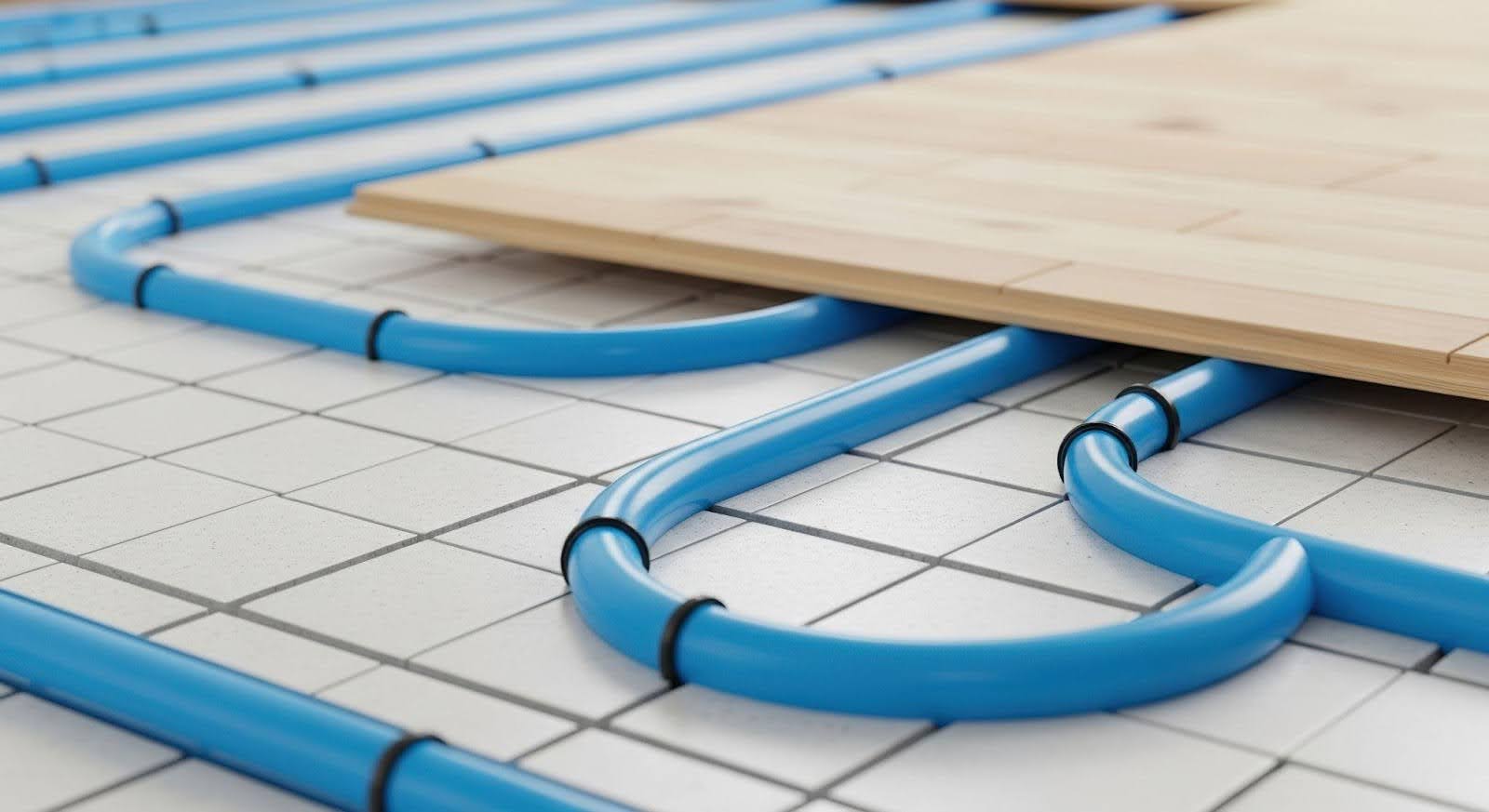If you live in an older home, there’s a good chance you still have galvanized water pipes running through your plumbing system.
While these pipes were once considered durable and reliable, decades of use often lead to corrosion, rust buildup, and leaks. What starts as a small drip could quickly turn into a broken pipe that damages walls, floors, and fixtures.
In this blog, we’ll explain what galvanized pipes are, how to recognize when they’re leaking, and the best ways to repair or replace them. If you suspect your system needs attention, professional plumbing services can restore your pipes and keep your water flowing smoothly for years.
What are galvanized water pipes?
A galvanized water pipe is a steel pipe coated with a thin layer of zinc. It was originally added to protect the metal from rust and corrosion, making galvanized pipes a popular choice for home plumbing systems throughout much of the 20th century.
Galvanized pipes delivered water from the main supply line into homes before copper and PEX piping became standard. Over time, though, the zinc coating wears away. Once that protective layer is gone, the steel underneath begins to corrode from constant water exposure.
Rust and mineral buildup start forming on the inside, restricting water flow and increasing pressure on weakened areas. Eventually, that corrosion leads to leaks or a broken pipe requiring an urgent water line fix.
If you suspect your home has aging galvanized lines, calling a professional for inspection and plumbing services will help prevent leaks and water damage before they happen.
Signs of leaks in galvanized water pipes
Because a galvanized water pipe corrodes from the inside out, leaks often start small and go unnoticed until the damage becomes serious. Spotting the early warning signs will save you from a costly repair and potential water damage. Here’s what to look for:
Low water pressure
As rust and mineral buildup form inside galvanized pipes, water flow becomes restricted. If your faucets or showerheads produce a weak or inconsistent stream, it could mean your pipes are partially clogged or leaking behind the walls.
Rust-colored or cloudy water
When corrosion begins to break down the inside of a galvanized water pipe, tiny rust particles mix with your water, giving it a reddish or yellow tint. Discolored water is one of the most common signs that the pipe’s protective zinc layer has failed.
Damp spots or water stains
You might have a broken pipe behind the surface if you notice unexplained damp spots on walls, ceilings, or floors. Even a small leak could cause stains, bubbling paint, or warped drywall over time.

Strange noises
A hissing or dripping sound when the water is off often means water is escaping somewhere in your plumbing system. These noises come from small leaks in old galvanized lines that are beginning to corrode.
Higher water bills
An unexpected increase in your monthly water bill is another sign of trouble. Even a small leak could waste dozens of gallons a day. If your bill keeps rising but your usage hasn’t changed, it’s time to call a plumber for a water line fix.
Early detection is key. The sooner you recognize these symptoms, the easier it is to prevent major damage. Professional plumbing services can locate hidden leaks, assess the condition of your pipes, and recommend the best repair or replacement options for your home.
How to identify and repair leaks
Step 1: Identify the leak
Look for visible signs, such as damp spots, rust stains, or bubbling paint, on walls and ceilings. Listen for hissing or dripping sounds when the water isn’t running.
If you suspect a hidden leak, turn off all water fixtures and check your water meter. If the meter continues to move even when everything is turned off, there’s a leak somewhere in your plumbing system.
For older homes, leaks are often part of a larger issue. In these cases, a thorough inspection by a professional plumber is the best way to identify problem areas and assess the overall condition of the pipes.
Step 2: Temporary fixes
If water leaks, immediately turn off the main water supply to your home. You can sometimes patch leaks temporarily with epoxy putty, rubber patches, or pipe repair clamps until a professional arrives. These quick fixes may buy time, but they don’t solve the underlying issue. Galvanized pipes that are already corroded will continue to weaken over time.
Step 3: Professional repairs
Permanent repairs require more than a simple patch. A licensed plumber will fix a water line by cutting out the damaged section and replacing it with new piping. In some cases, replacing the entire line with copper or PEX is more cost-effective and reliable than piecemeal repairs. This ensures the plumbing system is free from rust and future leaks.
Common causes of leaks in galvanized pipes
Leaks in a galvanized water pipe can develop due to age, corrosion, and everyday wear. Understanding what causes these issues will help you prevent them or know when it’s time to call a plumber for professional plumbing services.
Corrosion
Corrosion is the most common cause of leaks in galvanized piping. Without the zinc coating acting as a barrier, water and oxygen react with the exposed steel, forming rust that slowly eats through the pipe wall. Eventually, these weak spots turn into leaks or even broken pipes that need immediate attention.

Mineral buildup
If your home has hard water, minerals like calcium and magnesium build up inside the pipes. This scaling restricts water flow, raises pressure, and stresses the pipe’s structure. In time, that internal pressure can cause cracks, pinholes, or full leaks that require a water line fix.
Joint or fitting failure
The threaded joints used to connect galvanized pipes can loosen over time. Temperature changes, vibration, and shifting foundations contribute to worn or leaky fittings. Even a small amount of movement in these connections could create enough stress to cause leaks.
Poor installation or external stress
In some cases, the problem starts with the plumbing installation. Pipes that weren’t properly supported or exposed to constant vibration may develop cracks or weak spots. Shifting soil, foundation movement, or remodeling work can strain older pipes.
Whether the issue is corrosion, buildup, or age, professional inspection and plumbing services are the safest way to locate the leak and determine whether repair or replacement is the best solution.
Protect your home with expert pipe repair from Salisbury Plumbing
A small galvanized water pipe leak can quickly become a major plumbing problem. Whether you’re dealing with a slow drip or a broken pipe, getting help from experienced professionals is the best way to prevent water damage and costly repairs.
The team at Salisbury Plumbing specializes in leak detection, water line fix services, and full pipe replacement. We take the time to identify the root cause of the issue — whether it’s corrosion, buildup, or aging pipes — and provide lasting solutions that keep your plumbing system strong and efficient.
Don’t wait until a small leak becomes a big problem. Contact Salisbury Plumbing today for dependable plumbing services and expert repairs that protect your home and restore your peace of mind.







